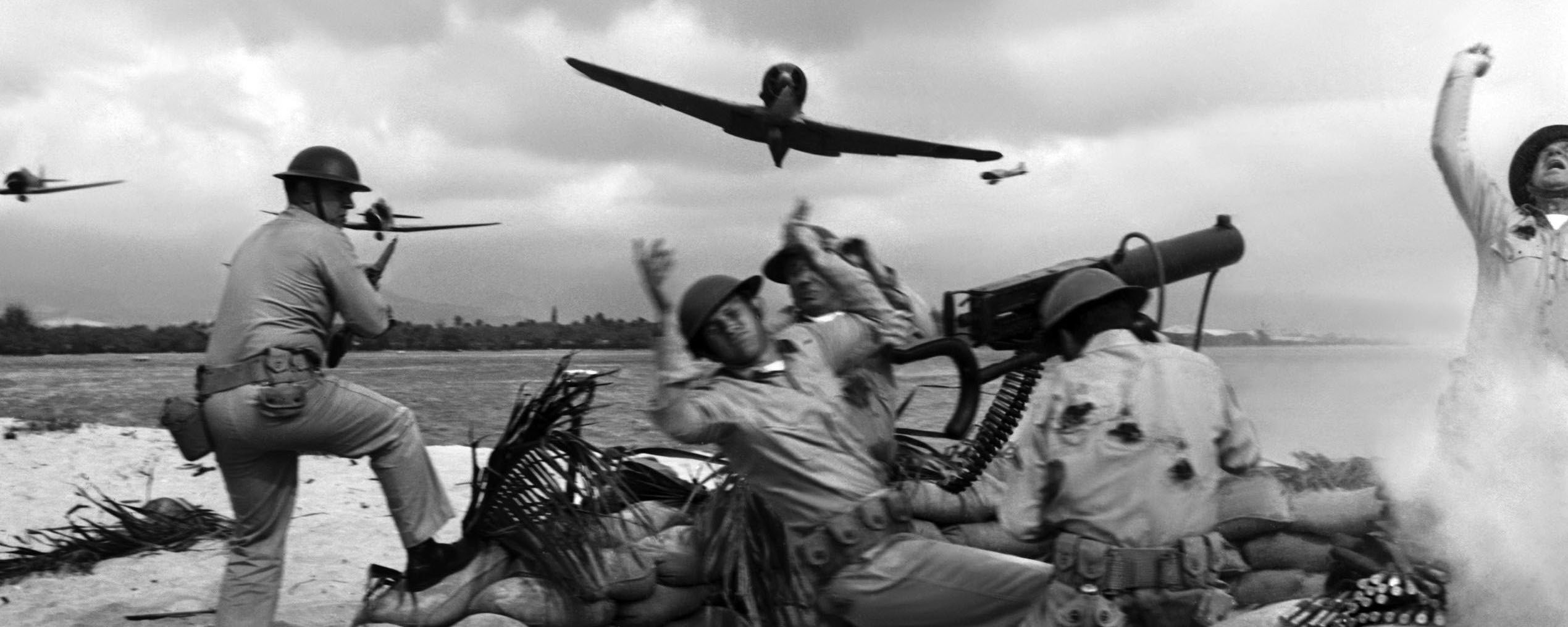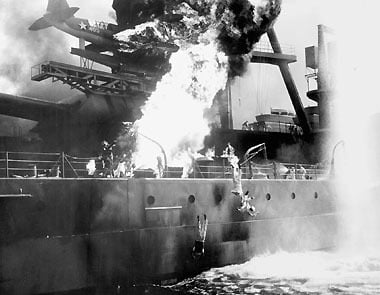
Wrap Shot: Tora! Tora! Tora!
Behind the scenes of the epic 1970 World War II drama told from two perspectives.
The enormous resources necessary to resink the R.M.S. Titanic for director James Cameron's new supermovie are unequalled in movie history, but past films have offered their share of spectacular ship disasters. The Titanic itself has been sent to the bottom several times, most notably by British International in Atlantic (1929), by a German company in Titanic (1943), by Rank Enterprises in A Night To Remember (1958) and by 20th Century Fox in Titanic (1954).
Of course, these sea disasters are just the tip of the iceberg, if you'll pardon the pun. Another liner suffered the same fate as the Titanic in United Artists' History Is Made at Night (1937); a Japanese aircraft carrier was destroyed in Universal's We've Never Been Licked (1943); all kinds of military ships were wiped out in Warner Bros.' Action in the North Atlantic (1943); and an all-star cast endured the salty splash of a tidal wave in The Poseidon Adventure (1972).
Our Wrap Shot is but one moment from what was probably the biggest sea disaster film from the past, Tora! Tora! Tora!. Released in 1970, the epic picture cost 20th Century Fox what was then an unprecedented bundle: $25 million. The finished product, a three-hour roadshow revealing both the American and Japanese viewpoints of the Pearl Harbor attack, required a reasonable facsimile of the destruction of the American fleet.
A large portion of the unprecedented production cost was budgeted for full-scale ship mockups and very large miniatures. Charles Wheeler, ASC served as the show's director of photography, L. B. Abbott, ASC and Art Cruickshank, ASC, were in charge of special photographic effects, and A. D. Flowers was director of the mechanical effects.

This photo shows a small part of a full-size battleship reproduction being bombed and torpedoed, while some stuntmen do their stuff. Some of the live-action and process scenes were staged in Osaka, Japan, including action involving an 80-foot section of a Japanese submarine.
Our term "very large miniatures" isn't the oxymoron one might think. In this case it meant 19 Japanese ships averaging 30 feet in length, 10 American ships averaging 40 feet long, the Battle Ship Row docks at Pearl Harbor, and a lot of surrounding landscape. The American ships were made to a larger scale (three-quarters of an inch to the foot) because they had to be blown up. The explosions were filmed with a special high-speed camera made by Photosonics, Inc., at speeds up to 15 times the normal frame rate. Scenes involving the miniatures were staged over a 40-day period at Sersen Lake (named for long-time special effects director Fred Sersen) at Fox's Malibu Ranch.
The effects work, incidentally, was impeccable.






